
It’s like game. It’s very much like game, both footed and winged. For most people however, it’s far more accessible. Very easy to find, it’s also very easy to prepare.
We love duck.
We also love roots and greens – and offbeat micro flavorings too.
I’ve now introduced the meal we enjoyed last night.
- one 12-ounce duck breast from Hudson Valley Duck Farm, the fatty side scored in tight cross hatching with a very sharp knife, the entire breast then sprinkled top and bottom with a mixture of sea salt, freshly-ground black pepper, and a little turbinado sugar (in our sugar bowl, infused over a very long time with a whole vanilla bean), the duck left standing for 30 or 45 minutes before it was pan-fried over medium heat, first the fatty side down, in a tiny bit of olive oil, draining the oil part of the way through [to be strained and used in cooking later, if desired], turned over half way through, removed when medium rare (cut into 2 portions to check that the center is of the right doneness, which means no more than medium rare), left to sit for several minutes before finishing it with a drizzle of sweet local lemon from Fantastic Gardens of Long Island and drops of a very good Campania olive oil, Lamparelli O.R.O., then scattered with some red wasabi micro radish from two Guys from Woodbridge [NOTE: the tenderloin would normally have been removed from the breast before it was marinated, but seasoned as the rest of the breast, and fried very briefly near the end of the time the bulk of the meat was cooking, dividing it into two parts and tucking them under the rest of the breast on the plates, but this time I could not find a tenderloin to remove]
- banana fingerling potatoes from Norwich Meadows Farm and ‘Magic Molly‘ purple fingerlings from Mountain Sweet Berry Farm (I wanted to use the purple potatoes but didn’t have enough, so I added the golden ones, and it worked out perfectly, for the aesthetic and the taste), tossed in a bowl with one sliced smallish red onion from Norwich Meadows Farm, a little olive oil, a generous amount of rosemary leaves from Eataly, more than a pinch of dark home-dried Habanada pepper, salt, and freshly-ground Tellicherry pepper, then spread onto a large well-seasoned Pampered Chef unglazed ceramic oven pan, roasted at 374-400º for about 20-25 minutes, or until the potatoes were cooked through and the onion a little crispy
- spinach from John D Madura Farm, washed in several changes of water, drained, gently wilted (that is, not reduced too far) inside a large enameled cast iron pot in a little olive oil in which one two cloves of garlic from John D. Madura Farm, halved or quartered, had first been allowed to sweat, then seasoned with salt, freshly-ground black pepper, a little crushed dried Itria-Sirissi chili (peperoncino di Sardegna intero) from Buon Italia, drizzled with olive oil and a little sweet loca lemon juice from Fantastic Gardens of Long Island
This is the duck breast just before it went into the hot pan.

And this is the pan of seasoned and herbed potatoes and onion just before it went into the hot oven.

- the wine was a California (Lodi) red, Sharon Weeks Cattoo Lodi Malbec 2015
- the music was a CD album of Lorenzo Ferrero‘s music which we had purchased blind (probably at Tower Records, sometime in the early 90s), because we had never heard of the composer (always a plus), and also because of the cover.

[the CD cover art is ‘La mano ubbidisce all’intelletto‘ [the hand obeys the intellect] (1983) oil on canvas, by Carlo Maria Mariani, an Italian exponent of Anacronismo and Pittura Colta]
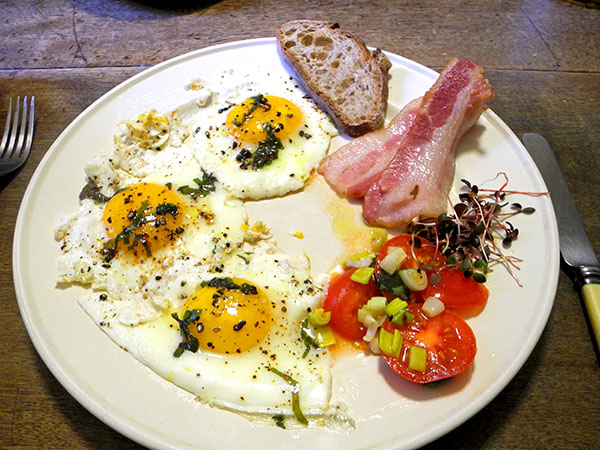
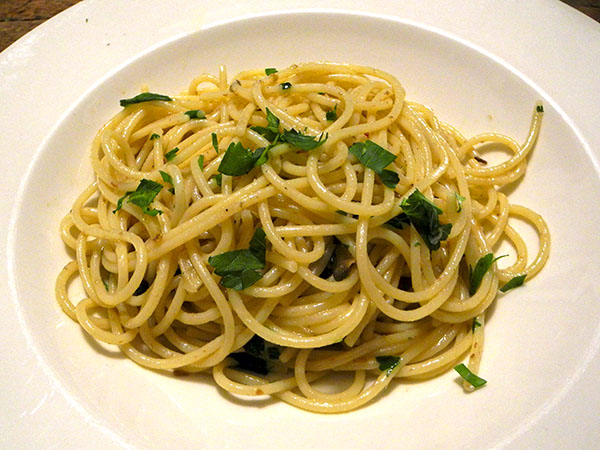

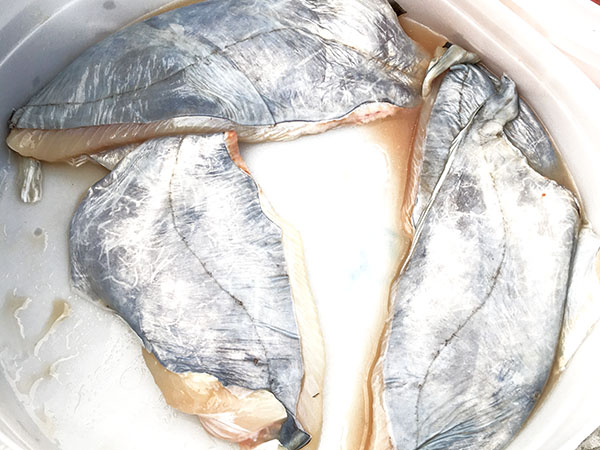
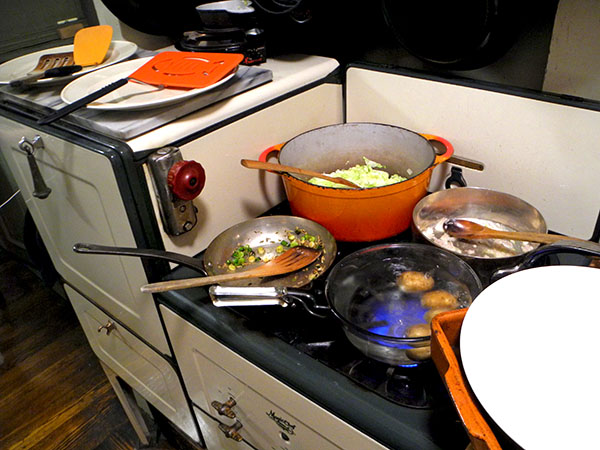
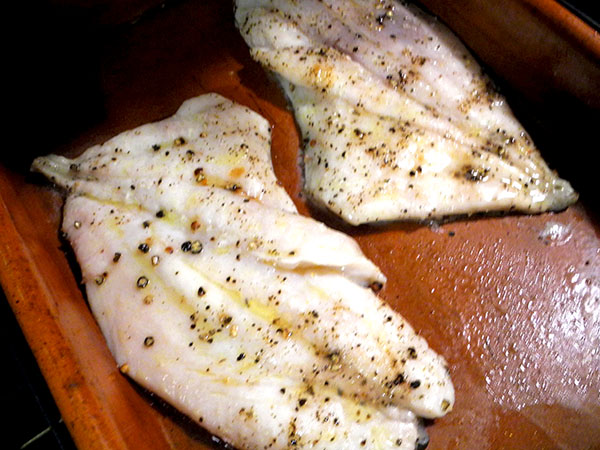
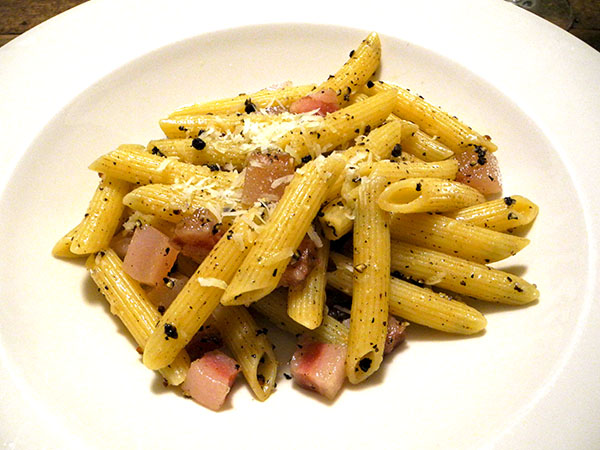 Years ago we used to enjoy this, what I will call ‘perfect meal’, very often, but, maybe because it’s been so long since we were in Italy, or maybe because I’ve become obsessed with cooking local fish, La Gricia seems to have made
Years ago we used to enjoy this, what I will call ‘perfect meal’, very often, but, maybe because it’s been so long since we were in Italy, or maybe because I’ve become obsessed with cooking local fish, La Gricia seems to have made